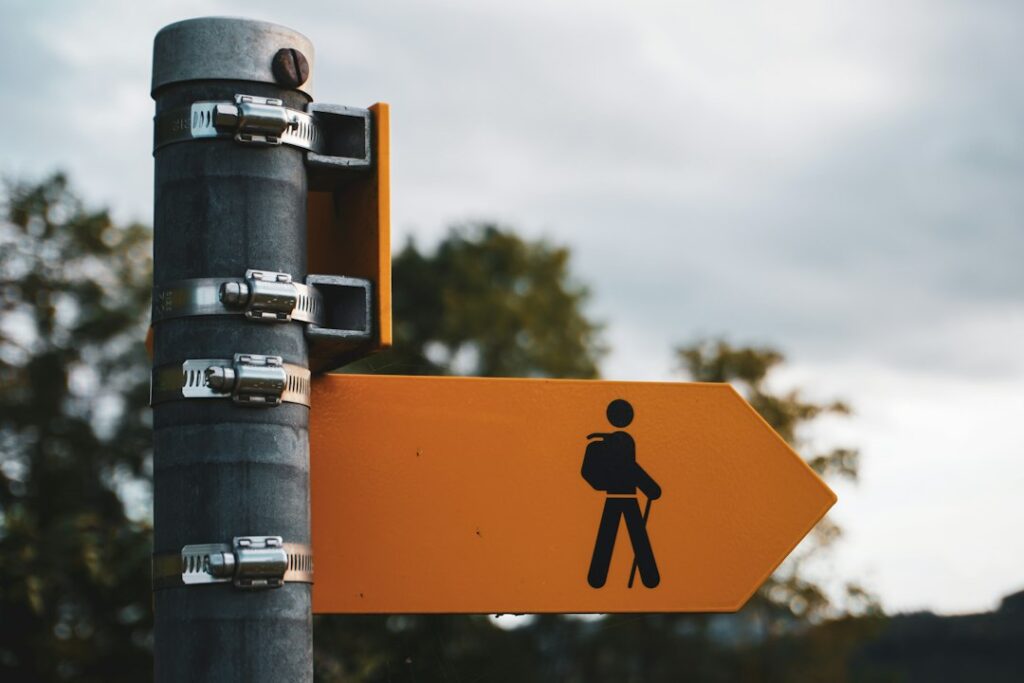In a nutshell:
- Classification and clustering are fundamental data science techniques for extracting insights from data.
- Classification predicts outcomes based on historical data, while clustering uncovers hidden patterns.
- Classification requires labeled data and is used for predicting specific outcomes, while clustering works with unlabeled data to explore data structures.
- Best practices for implementing these techniques include understanding data, choosing the right model, validating performance, and keeping models updated.
- AI plays a significant role in enhancing classification and clustering techniques, with tools like Pecan AI supporting classification models for various use cases.
The ability to extract meaningful insights from vast amounts of information can be the difference between market leadership and obsolescence. As organizations strive to harness the power of their data, two fundamental techniques in data science have emerged as powerful tools for decision-makers: classification and clustering.
These two approaches, while both aimed at making sense of complex datasets, serve distinct purposes and offer unique advantages. Classification, a supervised learning method, helps predict outcomes based on historical data, while clustering, an unsupervised technique, uncovers hidden patterns and groupings within your data. Understanding the difference between these methods and knowing when to apply each can significantly enhance your organization's data strategy and decision-making processes.
In this post, we'll demystify classification and clustering for business and data leaders. We'll explore how these techniques work, their practical applications across various industries, and the strategic advantages they can bring to your organization.
Whether you're looking to optimize marketing campaigns, streamline operations, or identify new market opportunities, grasping these fundamental concepts will empower you to ask the right questions and leverage your data assets more effectively.
Understanding Classification
Classification involves assigning predefined tags or labels to new observations based on patterns learned from labeled training data. In other words, the algorithm already knows what it needs to look out for in the data, thanks to the training conducted with the labeled data.
This approach is most effective when we have known outcomes we want to predict or when the classes in the dataset are previously known and well defined. The operation of an email spam filter is a good example of classification.
The filter recognizes spam emails by learning the patterns or traits of emails marked as spam in the past. When a new email arrives, it uses this learned information to classify the email as either 'spam' or 'not spam.'
Binary and Multiclass Classification
There are two major types of classification: binary and multiclass. In binary classification, we are interested in categorizing data into one of two different categories—for instance, deciding whether an email is spam or not.
On the other hand, multiclass classification involves assigning an instance to one of several different classes. An example of a multiclass classification problem would be identifying the breed of a dog in an image.
The choice between binary and multiclass classification largely depends on the data and the specific use-case. Both types have a wide range of applications and are powerful tools for interpreting data and making predictions.
Real-World Examples of Classification in Data Analysis
- Health care: Medical providers use classification to predict disease. Medical professionals can feed data, such as patient symptoms, medical history, and lab results, into a classification model. This model, having learned from past cases, can then classify new patients as 'at risk' or 'not at risk' for a particular disease, assisting doctors in early diagnosis and proactive treatment.
- Financial institutions: Classification models can generate loan default predictions. Based on numerous variables such as the borrower's credit score, income, loan amount, and employment status, the model classifies if a borrower will 'default' or 'not default' on their loan. This aids banks in risk management and making more informed lending decisions.
- Education: Classification techniques can predict students' future performance. Variables such as past academic performance, attendance records, and participation in extracurricular activities can classify students into categories like 'likely to excel,' 'average performance,' or 'needs additional support.' This can assist educators in identifying students who might need attention and personalized learning plans.
Understanding Clustering
Clustering is a process that partitions an assortment of data into different groups or clusters, where the items belonging to the same cluster are similar to each other but different from items in other clusters. Unlike classification, where predefined labels are based on known outcomes, clustering does not depend on known or pre-existing data labels.
The purpose of clustering is to investigate the underlying structure of the data. It is often useful when you have a large set of data and want to identify whether there are any natural groupings or patterns in the data. These groupings are not preconceived, allowing the data to 'speak for itself.'
Clustering is useful across many different fields, providing valuable insights. For example, in marketing, it can identify customer segments that exhibit similar behavior. In bioinformatics, it can classify genes with similar functionalities. In astronomy, it maps the distribution of galaxies in the cosmos.
Types of Clustering
There are several types of clustering, including:
- K-Means clustering: This is a widely used type of clustering method where the number of clusters (K) is predefined, and the algorithm assigns each data point to one of the K clusters based on the closeness to the mean value of each cluster.
- Hierarchical clustering: In this method, each data point starts as an individual cluster, and then these clusters progressively merge based on their similarities until only one large cluster remains.
- DBSCAN (Density-Based Spatial Clustering of Applications with Noise): This method groups together points packed closely together (points with many nearby neighbors), marking the points that lie alone in low-density regions as outliers.
The choice of clustering type largely depends on the nature of the problem, the type of data available, and the specific outcomes desired. Each type has a unique mathematical approach, offering different insights into the structure of the data.
Real-World Examples of Clustering in Data Analysis
- Market research: Clustering can help identify distinct customer segments. By analyzing a vast amount of consumer data, businesses can group their customers based on shared characteristics such as age, location, spending habits, and behaviors. This approach allows businesses to tailor their marketing strategies specifically to each identified segment, enhancing their customer reach and engagement.
- Healthcare: Clustering can analyze and group patient data. For example, doctors and healthcare researchers can use clustering to identify groups of patients with similar symptoms or medical histories. This can help identify patterns and trends in patient data, leading to better diagnoses and treatments.
- Tech industry: Recommender systems use clustering to improve their recommendations. For instance, a music streaming service might use clustering to group similar songs together. When a user listens to a song, the system can recommend other songs from the same cluster, enhancing the user's experience by recommending music they are likely to enjoy.
- Urban planning: Clustering can analyze data about residents, infrastructure, and environmental factors. For example, planners can identify clusters of homes with similar energy use patterns to make more informed decisions about where to make infrastructure upgrades or where to focus energy conservation efforts.
Key Differences Between Classification and Clustering
The key differences that define classification and clustering can significantly influence the choice of technique, depending on the nature of the data problem at hand.
Methodology and Approach
The principal difference between classification and clustering rests in their methodology. Classification is a supervised learning method, meaning it relies on a predefined target variable. For example, if you're tasked with classifying emails into 'spam' or 'not spam,' you would have pre-existing labels to guide the model.
On the other hand, clustering is an unsupervised learning methodology that categorizes data points into different groups based on their similarity without prior knowledge of those groupings. Essentially, it is like giving a child different-shaped blocks and watching how they group them together.
Use Cases and Scenarios for Each Technique
The use-case scenario further draws a line between differentiating classification and clustering. Classification is a popular choice when an outcome is anticipated. For instance, a credit card company could leverage classification algorithms to predict whether a new transaction is fraudulent based on historical transaction patterns.
Clustering finds its strength in exploratory data scenarios, where patterns and structures are unknown. An excellent example would be a marketer trying to segment their audience based on demographics or buying behavior without any preconceived notions about what these segments might look like. Here, clustering algorithms would create groups based on data similarities and disparities.
Understanding these key differences in approach and application can equip data leaders to better leverage each technique as per their specific requirements. It's the analytical equivalent of having the right tool for the job, each designed for a different type of work.
Considerations for Data Leaders
Choosing between classification and clustering isn't a simple decision, and you must make it with a deep understanding of the data you're dealing with, the problem you're trying to solve, and the outcomes you're expecting.
When deciding which analytical technique to use, the following factors can be helpful to consider:
- Data and labels: As mentioned earlier, classification requires labeled data for training, while clustering works best with unlabeled data.
- Purpose of analysis: If your goal is to predict a specific outcome based on predefined categories, classification is the way to go. If you want to explore the data and find hidden patterns or groupings, clustering would be better suited.
- Available resources: Classification, especially with large datasets, can require significant computational resources and time for training. On the other hand, clustering might be a quicker, albeit less precise, way to understand your data.
Best Practices for Implementing Classification and Clustering Techniques
Adopting classification and clustering techniques is a powerful step in leveraging data for decision-making. However, it's important to follow some best practices.
- Understand your data: Before implementing any technique, ensure that you understand your data, including its structure, the type of variables it has, and the relationships between those variables.
- Choose the right model: There are various models for both classification and clustering. Understand the strengths and weaknesses of each to choose the one that fits your needs best.
- Validate your model: Ensure that your model performs well not just on your training data, but also on new, unseen data. This can help ensure your model's reliability and robustness.
- Keep your model updated: The validity of your model can change as the underlying data changes. Regularly reviewing and updating your model can help keep your insights relevant.
Best Practices for Implementing Classification and Clustering Techniques
Implementing classification and clustering techniques offers tremendous potential for leveraging data for decision-making. However, it's essential to follow best practices to get the most out of these techniques.
These practices include understanding the data and its structure, choosing the right model, validating the model's performance on unseen data, and regularly updating it to remain relevant in the changing data landscape.
Incorporating AI in Data Analysis
Artificial Intelligence (AI) plays a significant role in enhancing both classification and clustering techniques. AI can automate data analysis processes, making them faster and more efficient. This automation allows for the processing of larger datasets, leading to more accurate results and insights.
Machine learning algorithms, a subset of AI, are extensively used in both classification and clustering. In classification, machine learning algorithms such as decision trees, logistic regression, and support vector machines are often used. In clustering, K-Means and hierarchical clustering algorithms are common.
AI can also help in feature selection and extraction, determining which variables in the dataset are most relevant for classification or clustering. This can help increase the accuracy of the models and provide more meaningful insights.
When considering using classification or clustering for your data problems, it's worth exploring AI tools and platforms that can facilitate and enhance these techniques.
How Pecan AI can Support Classification Models
Pecan AI is designed to support classification models for various use cases. It automates critical stages such as data preparation, model building, and model evaluation, effectively saving time and reducing the potential for human error.
With an easy-to-use dashboard, Pecan presents classification model performance information in a comprehensive and understandable manner. With its streamlined functionalities, Pecan is one of the fastest ways to implement classification models for your business.
Benefits of Classification and Clustering in Data Analysis
Both classification and clustering offer unique benefits in data analysis. Understanding the key differences, strengths, and applications of each technique helps in choosing the right tool for your data problems.
Test various techniques, refine your models, and continue to learn and adapt as your data and objectives evolve. Remember that you should always inform the decision to use classification or clustering based on your specific goals, available resources, and the nature of your data.
When chosen and applied appropriately, both classification and clustering can yield significant insights and drive strategic decision-making. To further understand how Pecan AI can support your classification model projects, reach out and get a demo.










